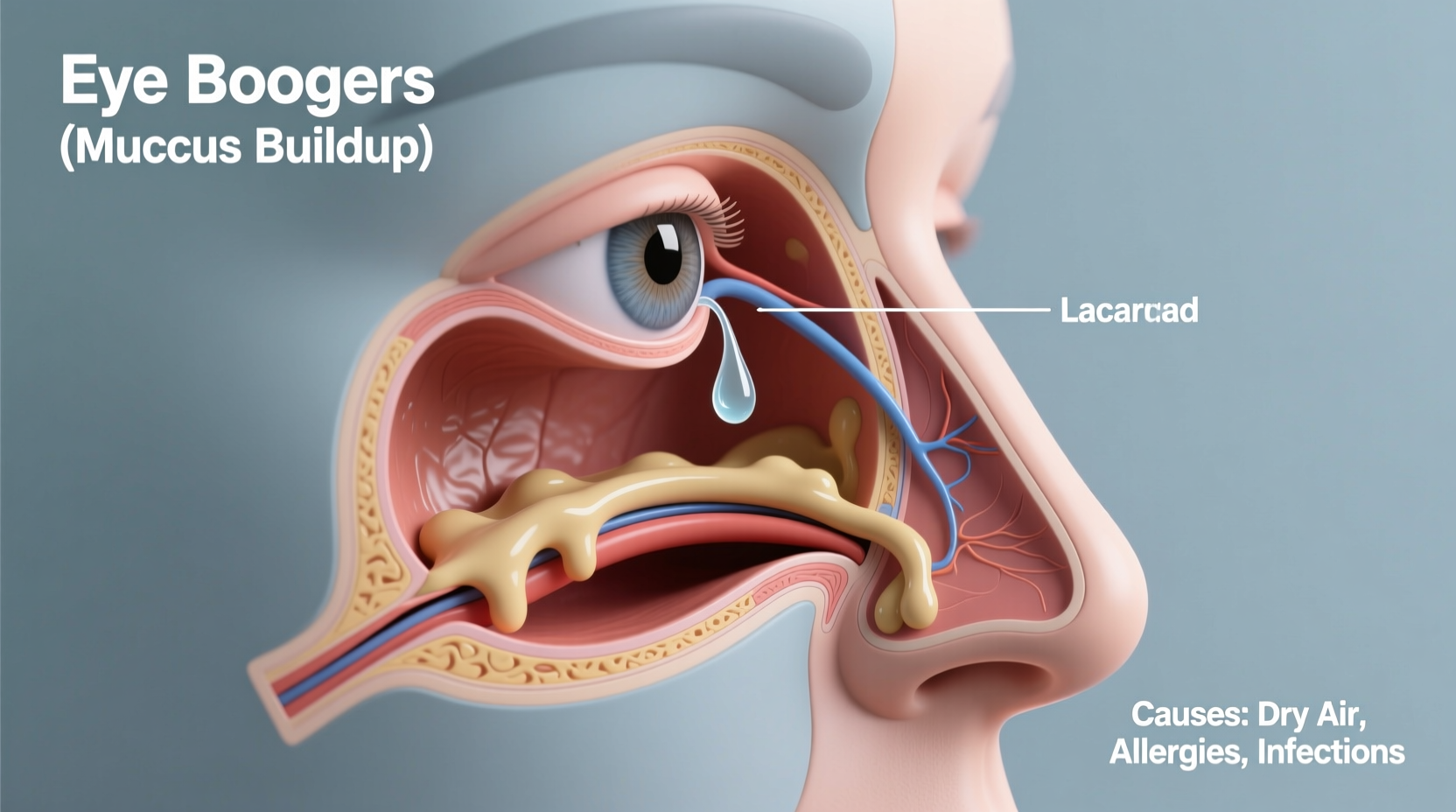Eye boogers—also known as rheum or gound—are a familiar part of waking up for most people. That crusty buildup in the corners of your eyes, especially after sleep, is usually harmless. But if it becomes excessive, changes color, or is accompanied by discomfort, it might signal an underlying issue. Understanding why eye boogers form, what’s normal, and when to seek medical advice can help you maintain optimal eye health.
What Are Eye Boogers and How Do They Form?

Eye boogers are a natural mixture of mucus, oil, skin cells, and debris that accumulate at the corners of the eyes while you sleep. During the day, blinking helps clear this buildup by spreading tears across the surface of the eye and draining excess fluids through the tear ducts. At night, when blinking stops, the discharge collects and dries, forming the crust commonly referred to as “sleep” or “eye boogers.”
The conjunctiva—a thin, transparent layer covering the white part of the eye and inner eyelids—produces mucus as part of its protective function. This mucus traps dust, bacteria, and other foreign particles. Combined with oils from the meibomian glands and leftover tears, it forms the typical discharge seen upon waking.
Common Causes of Eye Discharge
In most cases, mild eye discharge is a normal bodily function. However, several factors can increase its volume or alter its consistency:
- Normal overnight accumulation: The most common cause—especially in the morning.
- Allergies: Seasonal or environmental allergens like pollen, dust, or pet dander can trigger watery, stringy discharge along with itching and redness.
- Dry eye syndrome: Paradoxically, dry eyes may produce excess mucus as a compensatory mechanism, leading to more noticeable boogers.
- Blepharitis: Inflammation of the eyelid margins often results in greasy, foamy discharge and crusting around the lashes.
- Viral infections: Viral conjunctivitis (pink eye) typically causes clear or watery discharge, redness, and a gritty sensation.
- Bacterial infections: Bacterial conjunctivitis produces thick, yellow-green pus that can glue eyelids shut in the morning.
- Blocked tear ducts: Common in infants but can occur in adults; leads to persistent tearing and mucus buildup.
When Allergies Are the Culprit
Allergic conjunctivitis affects millions annually. It's not contagious but can mimic infection symptoms. Unlike bacterial cases, allergic discharge tends to be stringy and clear, often affecting both eyes symmetrically. People with hay fever or asthma are more prone to this condition, particularly during high-pollen seasons.
“Eye discharge due to allergies is often chronic but manageable with proper identification of triggers and consistent treatment.” — Dr. Lena Torres, Ophthalmologist
When to Worry: Red Flags Requiring Medical Attention
While occasional eye boogers are normal, certain signs indicate a need for prompt evaluation by an eye care professional:
| Symptom | Possible Cause | Action Required |
|---|---|---|
| Thick yellow or green discharge | Bacterial conjunctivitis | See doctor; may require antibiotic drops |
| Severe redness and pain | Keratitis or uveitis | Seek immediate care |
| Light sensitivity and blurred vision | Corneal involvement or deeper infection | Urgent ophthalmology consultation |
| One-sided swelling and crusting | Stye, chalazion, or localized infection | Monitor; consult if worsening |
| Persistent discharge beyond 7–10 days | Chronic blepharitis or blocked duct | Follow-up with optometrist |
Real Example: When a Simple Case Turned Serious
Mark, a 34-year-old teacher, noticed increasing eye discharge over five days. Initially dismissing it as allergies, he used over-the-counter drops. But when his left eye became swollen, painful, and sensitive to light, he visited an urgent care clinic. He was diagnosed with bacterial keratitis—an infection of the cornea—likely from touching his eye with unwashed hands after gardening. Prompt antibiotic treatment prevented permanent damage, but recovery took three weeks. His case underscores the danger of ignoring worsening symptoms.
Managing and Preventing Excessive Eye Discharge
Most cases of routine eye boogers don’t require treatment. However, if you're prone to buildup or recurring irritation, adopting simple hygiene practices can make a significant difference.
Step-by-Step Daily Care Routine
- Morning cleansing: Use a warm, moist washcloth to gently loosen and wipe away crust from the outer corner inward.
- Lid hygiene: For those with blepharitis, apply a diluted baby shampoo solution on a cotton swab and gently scrub the base of the lashes.
- Warm compresses: Apply for 5–10 minutes twice daily to unclog oil glands and reduce inflammation.
- Avoid eye rubbing: Hands carry bacteria; rubbing can worsen irritation or introduce infection.
- Replace eye makeup regularly: Mascara and eyeliner should be replaced every 3–6 months to prevent bacterial growth.
Frequently Asked Questions
Is it normal to have eye boogers every morning?
Yes, small amounts of clear or whitish discharge upon waking are completely normal. It’s only concerning if the amount increases significantly or changes in color or consistency.
Can eye boogers be contagious?
The boogers themselves aren’t contagious, but if they’re caused by a viral or bacterial infection (like pink eye), the pathogens in the discharge can spread through touch. Always wash hands after cleaning the eye area.
Why do babies have so many eye boogers?
Many newborns have sticky eyes due to a partially blocked tear duct, which usually resolves on its own by 6–12 months. Massaging the inner corner of the eye (as directed by a pediatrician) can help open the duct.
Conclusion: Know Your Normal, Act on Changes
Eye boogers are a natural part of ocular health, reflecting your body’s way of cleaning and protecting your eyes. Recognizing what’s typical for you—and knowing when something is off—is key to preventing complications. Most cases require nothing more than gentle hygiene, but persistent, painful, or vision-affecting symptoms demand professional evaluation. Eye infections, if left untreated, can lead to corneal damage or long-term issues.
By staying informed and proactive, you protect not just comfort but also clarity of sight. Don’t ignore sudden changes. Your eyes are sensitive indicators of overall health—listen to what they’re telling you.









 浙公网安备
33010002000092号
浙公网安备
33010002000092号 浙B2-20120091-4
浙B2-20120091-4
Comments
No comments yet. Why don't you start the discussion?